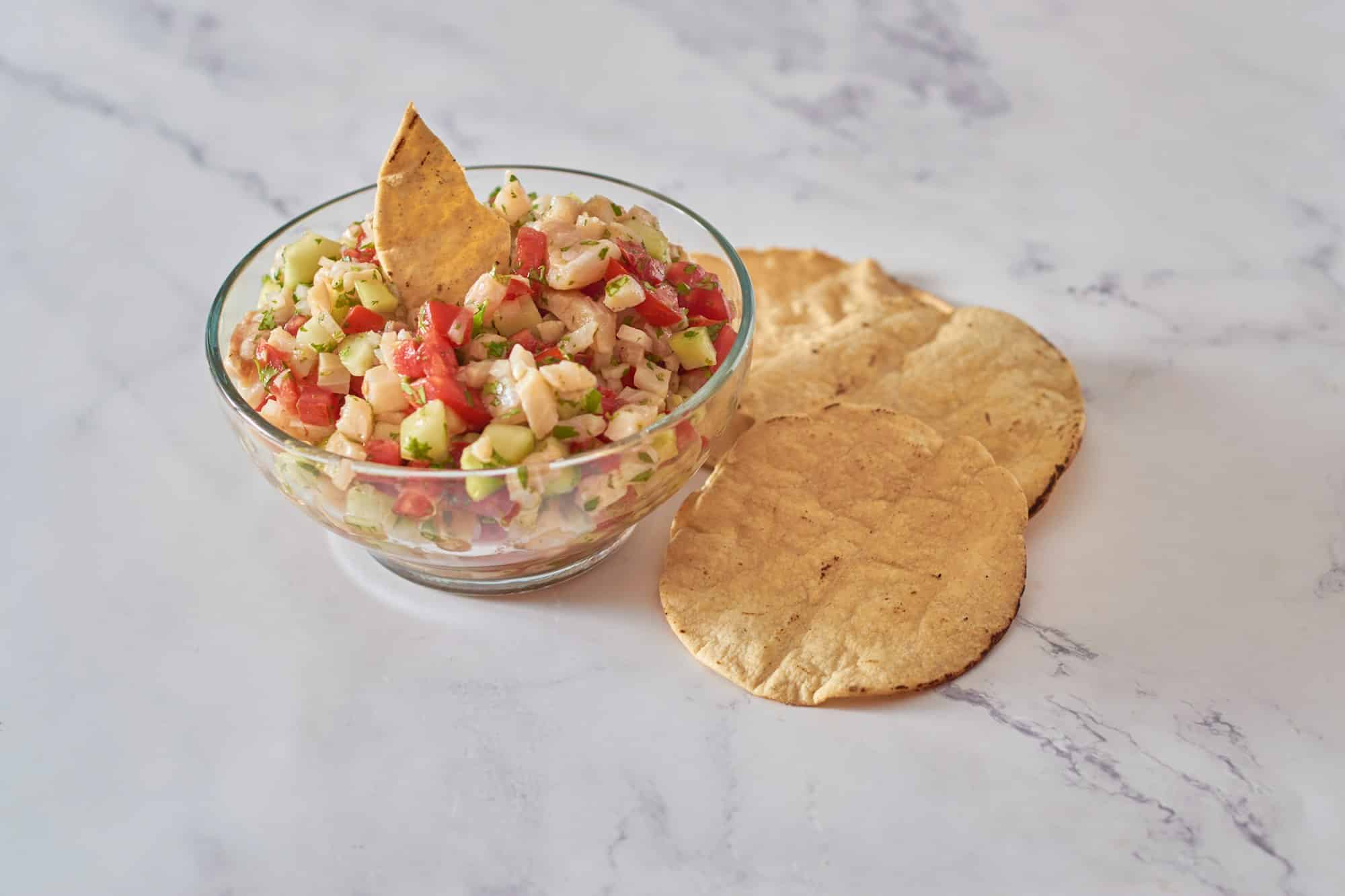What’s the Key to a Succulent Peruvian Ceviche with Tiger’s Milk?

There’s nothing quite like a plate of fresh Peruvian ceviche to set your taste buds on a thrilling gastronomic adventure. This classic Peruvian dish, a beloved icon of coastal cuisine, is a beautiful melody of flavors and textures. Imagine delicate pieces of fish, bathed in a vibrant mix of lime juice, red onion, and hot pepper, served with a generous drizzle of leche de tigre or tiger’s milk. However, the true charm of ceviche lies in more than just its ingredients. It’s how you bring them together that makes this dish shine. In this article, we’ll unravel the secrets to a succulent, mouth-watering Peruvian ceviche with tiger’s milk, guiding you to perfect each element from the fish to the fiery tiger’s milk.
Choosing the Right Fish
When it comes to ceviche, the star of the show is undeniably the fish. As such, selecting the right type of fish can make or break your ceviche. Commonly in Peru, sea bass or flounder is used, but any firm, white-fleshed fish will do.
A lire aussi : Can You Create a Sumptuous French Bouillabaisse with Rouille Sauce?
Always opt for the freshest fish you can find. Remember, freshness is key. The fish should not have a strong, fishy smell; instead, it should smell more like the ocean, fresh and briny. Visually, it should be glossy and firm to touch, not slimy or discolored.
Cut your fish into uniform pieces, usually about half-inch cubes. This not only ensures even marinating, but also contributes to a pleasing presentation. And remember, less is more when it comes to marinating. Contrary to popular belief, you don’t need to marinate the fish overnight. A quick 15-minute soak in lime juice is enough to ‘cook’ the fish, transforming it from raw to opaque and firm.
Sujet a lire : How to Layer a Rich Italian Tiramisu with Homemade Ladyfingers?
Mastering the Marinade: Lime Juice and Salt
The marinade, or leche de tigre, is the heart and soul of a Peruvian ceviche. It is what imparts that distinctive tangy, citrusy flavor to the fish and brings the entire dish together.
The primary ingredient in the marinade is lime juice. Lime juice is preferred over other citrus juices for its acidity and vibrant flavor. Freshly squeezed lime juice is the best. It should be noted that the limes should be squeezed gently; you don’t want to extract the bitter flavors from the pith and peel.
The other crucial ingredient is salt. It enhances the flavor of the other ingredients and cures the fish. The amount of salt to use can be adjusted according to taste, but a good rule of thumb is one teaspoon of salt for every pound of fish.
The Supporting Cast: Onion, Pepper, and Cilantro
While the fish and marinade are the stars of the show, the additional ingredients play vital supporting roles in rounding out the flavor profile of the ceviche.
The most important of these is the red onion, which provides a sweet, sharp contrast to the tangy lime juice. The onions should be thinly sliced into half-moons and rinsed in cold water to remove any harsh, astringent flavors.
Pepper is what gives ceviche its spicy kick. The traditional pepper used in Peruvian ceviche is aji limo, a hot red pepper native to Peru. However, if you can’t find aji limo, you can use habanero or jalapeno peppers as a substitute.
Last but not least, we have cilantro, which lends a fragrant, earthy touch to the ceviche. It should be finely chopped and added just before serving to preserve its fresh flavor.
Crafting the Tiger’s Milk
Leche de tigre, or tiger’s milk, is the Peruvian term for the marinade used in ceviche. It is so named because it is said to have aphrodisiac properties, and to give the diner the strength of a tiger.
Crafting the perfect tiger’s milk is a delicate balancing act. It should be tangy from the lime juice, spicy from the peppers, and slightly salty. But the real secret to a great tiger’s milk is the addition of fish juice. This is the liquid that comes out of the fish when it’s marinating. It gives the tiger’s milk a deeper, more complex flavor and a slightly thicker consistency.
To make your tiger’s milk, combine the lime juice, salt, pepper, a bit of red onion, and a piece of fish in a blender. Blend until everything is finely chopped, then strain the mixture through a fine-mesh sieve. Add in some of the fish juice from the marinating fish, and your tiger’s milk is ready to go.
Serving Your Peruvian Ceviche
Presentation is a critical aspect of the Peruvian ceviche experience. A well-presented ceviche is not just a feast for the palate, but also for the eyes.
Typically, Peruvian ceviche is served in a shallow bowl or a deep plate, allowing the tiger’s milk to pool around the fish. The fish and onions should be nestled in the center, with the slices of hot pepper and sprigs of cilantro arranged on top as a garnish. Often, it is accompanied by sweet potato, corn on the cob, or plantain chips on the side for added texture and flavor contrast.
Remember, ceviche is best enjoyed fresh. Don’t let it sit for too long after it’s made, or the fish will become overly ‘cooked’ and lose its delicate texture. Serve it right away, and savor the explosion of flavors with each bite.
Pairing Peruvian Ceviche with Traditional Sides
No Peruvian ceviche experience is complete without its traditional accompaniments. These sides not only provide a contrasting texture but also balance the tangy and spicy flavors of the ceviche.
A classic side served with Peruvian ceviche is sweet potato. The naturally sweet flavor of the sweet potato acts as a perfect counterbalance to the acidity of the tiger’s milk. The sweet potato should be boiled until just tender, and served in slices or chunks alongside the ceviche.
Corn on the cob, or choclo as it’s known in Peru, is another traditional accompaniment. The large, starchy kernels of Peruvian corn provide a satisfying crunch and a hint of sweetness. If you can’t find choclo, regular corn on the cob will work as well.
For a crisp, salty crunch, plantain chips or tortilla chips are a great addition. They can be used to scoop up the ceviche, allowing you to get all the flavors in one bite.
Finally, a few slices of avocado bring a creamy, soothing note to the plate. This is especially welcome if you’ve been generous with the chili pepper in your ceviche.
Remember, each of these sides should be prepared fresh, just like the ceviche itself, to honor the spirit of this traditional Peruvian dish.
The Cultural Significance of Peruvian Ceviche
Ceviche is not just a dish, but a symbol of Peruvian culture and heritage. This iconic seafood dish is deeply entrenched in Peru’s culinary identity and mirrors the country’s rich history, diverse geography, and vibrant culture.
Peruvian ceviche, much like the Inca trail to Machu Picchu, is a testament to the country’s unique blend of indigenous and Spanish influences. Just as the trek to Machu Picchu reveals a journey through distinct ecological zones and ancient ruins, the making of ceviche combines various elements – fresh fish from the coastal waters, chili peppers from the highlands, and lime juice introduced by the Spaniards – to create a dish that is distinctly Peruvian.
Just as each step on the Inca trail reveals a new sight, each bite of ceviche offers a new taste sensation. The firm, white fish represents the bounty of the sea. The tangy lime juice and spicy chili pepper reflect the bold, vibrant spirit of the Peruvian people. The sweet potato and corn speak to the country’s agricultural heritage.
In conclusion, Peruvian ceviche with tiger’s milk isn’t just a plate of food. It’s a culinary journey through the heart of Peru, a dance of flavors that tells the story of a rich and diverse culture. Whether you’re trekking the Inca trail, exploring the ruins of Machu Picchu or sitting down to a meal in a bustling Lima restaurant, the taste of Peruvian ceviche is one you won’t quickly forget. It’s a taste that invites you to delve deeper, to explore further – into the heart of Peru’s vibrant culture, and into the soul of its beloved cuisine.
